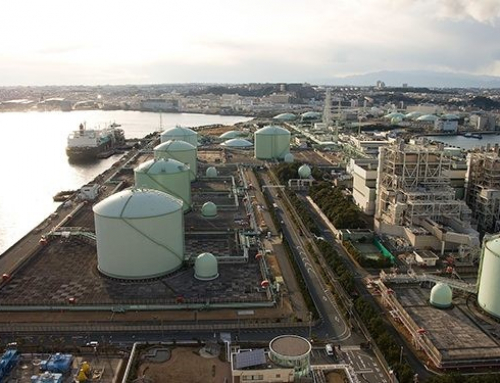
Dredger at work in the Bristol Channel. Image: By Ben Salter, via Wikimedia Commons
This article first appeared on the www.climatenewsnetwork.net website
by Paul Brown
Arguments over where to dump huge amounts of potentially radioactive mud are now ensnarling the UK’s nuclear plans.
Vast quantities of mud, which campaigners say may contain radioactive particles, are the latest problem to confront the UK’s nuclear plans for two new reactors under construction in the West of England.
The nuclear industry, which insists that it is a key part of fighting climate change, is no stranger to controversy, and it may be glad that it has experience of arguing for the mud’s harmless character.
The battle concerns campaigners’ attempts to prevent 600,000 cubic metres of mud from the sites of two closed reactors being dumped in the waters of the Bristol Channel, close to where the French nuclear company EDF is building two new reactors at Hinkley Point.
EDF wants to move the mud from where it is now so that it can build the water intakes for the new reactors up to three kilometres offshore.
Relying on tides
The issue is whether the mud contains radioactivity discharged from the old Hinkley Point reactors, and whether dredging it will release dangerous particles to be distributed across the estuary onto Welsh beaches.
Amid much controversy EDF was given permission to dump 300,000 cubic metres of mud from the same site in 2018, but in the end it moved less than half the total to the disposal grounds close to Cardiff, the capital of Wales. The plan is not for the mud to settle on the sea bed but for the powerful tides that scour the Bristol Channel to distribute the mud over much of the estuary.
The campaigners opposing the dumping believe there is a risk that the mud contains plutonium and other highly dangerous radionuclides which can reach the shore in spray or dry in sand on the beaches and then be blown inland.
These particles could be inhaled, they say, and could cause an increase in cancers – particularly child leukaemia and birth defects.
“Our message is that the only acceptable reassurance is the assurance that the mud and all its particles will remain untouched”
The 34 groups, with members including policy analysts, experts and local authorities, spell out their objections in a letter sent to the First Minister of Wales, Mark Drakeford. They ask for an extended sampling programme, for protection of Welsh people’s health, and for the appointment of an expert group to advise on the dangers.
Natural Resources Wales (NRW), the Welsh government’s environment agency, has received over 150 representations about EDF’s plan and has imposed conditions on the company, requiring it to sample the mud from the area to be dredged, including for plutonium and other radionuclides.
EDF, whose two reactors will cost £22.5 billion (US$27.9bn) by 2025, said the dredging was safe and that claims the mud was toxic were wrong. All the mud dumped already had been tested to international standards, it said, and it was sure it was safe.
At the heart of the argument are the internationally accepted radioactive dose limits for humans. There is an increasing body of evidence of cancer clusters around nuclear installations, but established government scientists reject the idea that there could be a link with radioactivity.
Urgent review
These issues are discussed in a recently published report for Children with Cancer UK. It calls for an urgent scientific reassessment of international standards and says that governments are trying to avoid the evidence of the dangers of low-level radiation.
The report suggests the risk is far greater than officially acknowledged.
Those who wrote to Mark Drakeford supported this view. They said: “Past activities at the Hinkley nuclear site have almost certainly resulted in the dispersal of plutonium and other radioactive substances on land in the Severn Estuary in the area adjacent to the plant.
“These carcinogenic (cancer-causing) materials are highly likely to be present in the mud EDF wants to dump on the north side of the estuary, close to Cardiff, with a population of 350,000 people.”
‘Risk to thousands’
They add that well-documented evidence shows radioactive particles can come ashore, travel long distances on the breeze, “and can easily be ingested or inhaled, adding to the risk of cancer, leukaemia and congenital malformation at far higher rates than government advisors and the nuclear industry admit.
“Disposal of material which has not been adequately assessed for content of plutonium and other alpha-emitting materials is highly irresponsible and represents a potential health risk for thousands of people in Cardiff and beyond.”
Richard Bramhall, from the Low-Level Radiation Campaign, said: “Our message is that the only acceptable reassurance is the assurance that the mud and all its particles will remain untouched.”
EDF denies any danger. Chris Fayers, head of environment at Hinkley Point C, said the second phase of dredging was necessary ahead of drilling six vertical shafts for the cooling water system for the new power station.
More stringent testing
“The mud is typical of sediment found anywhere in the Bristol Channel and no different to sediment already at the Cardiff Grounds [disposal] site”, he said.
“Ahead of the second phase of dredging independent experts will carry out further analysis of the mud and sediment using techniques that are even more stringent than those used in 2017.”
He said NRW had confirmed that independent analysis showed the levels of toxicity were so low as to be not classed as radioactive under UK law, and posed no threat to human health or the environment.
NRW says: “We only grant licences if we’re satisfied that the activity can take place without harming the health of people, wildlife and the environment.” – Climate News Network
Bottom of Form

About Paul Brown
Paul Brown, a founding editor of Climate News Network, is a former environment correspondent of The Guardian newspaper, and still writes columns for the paper




